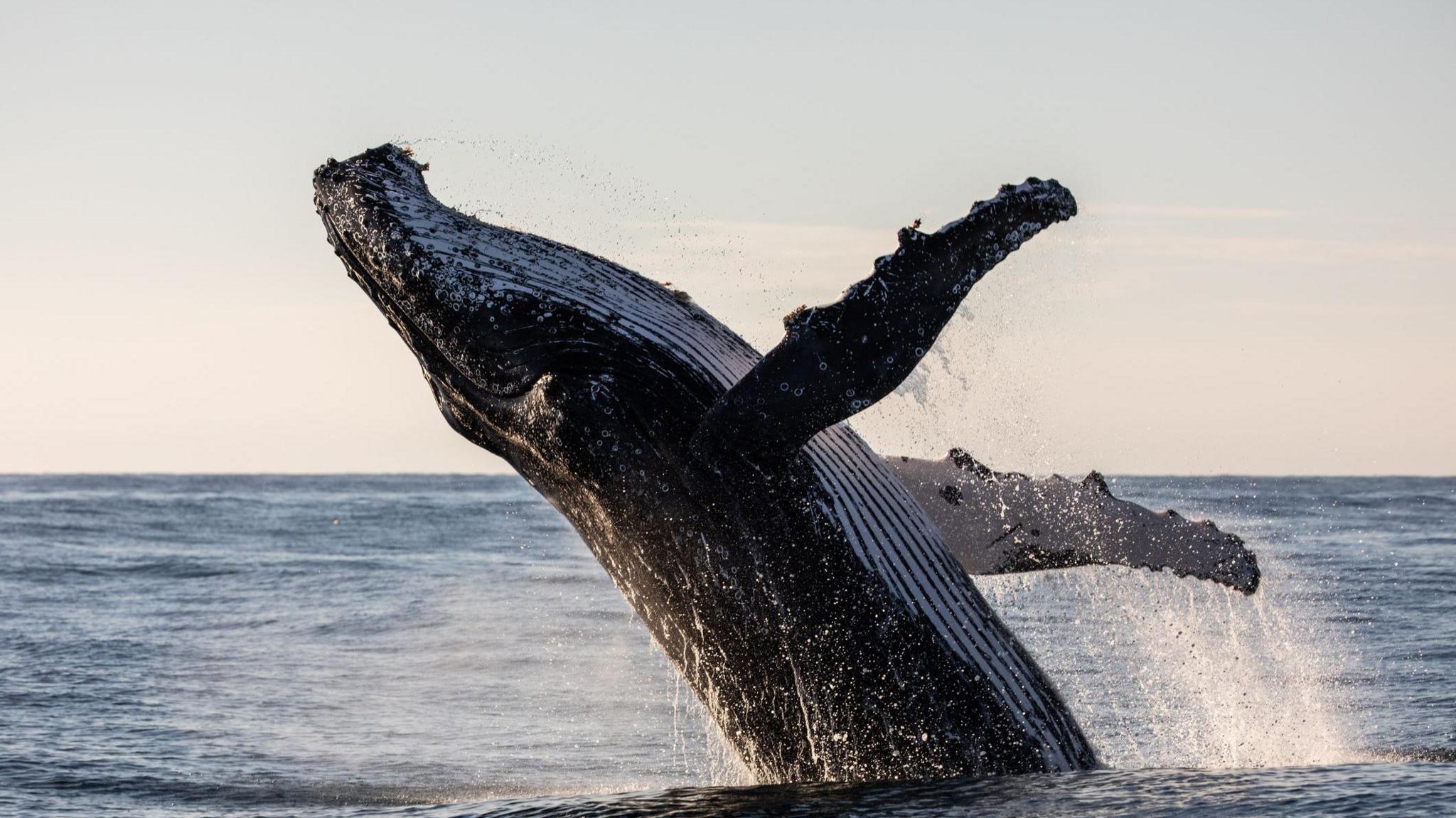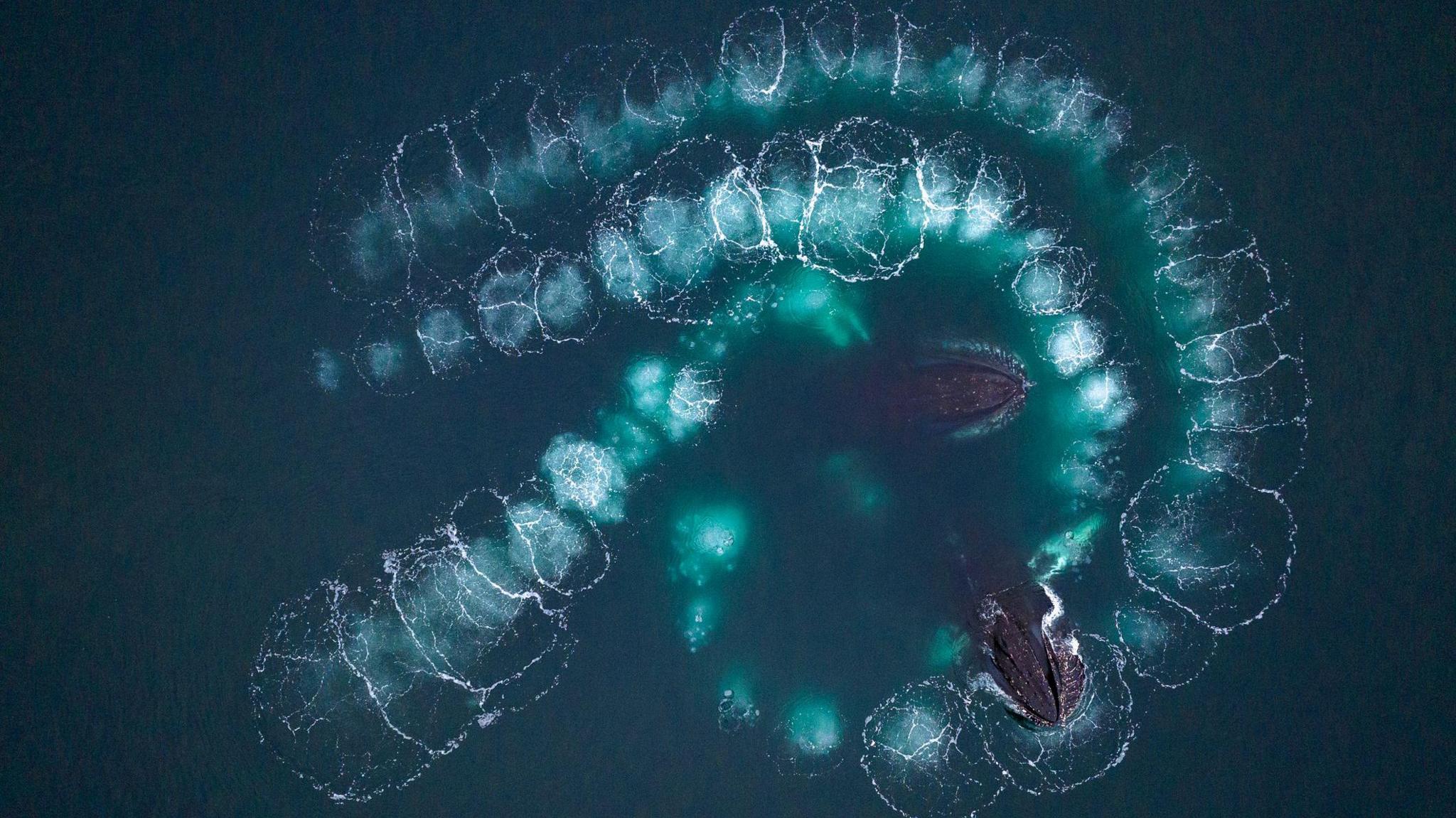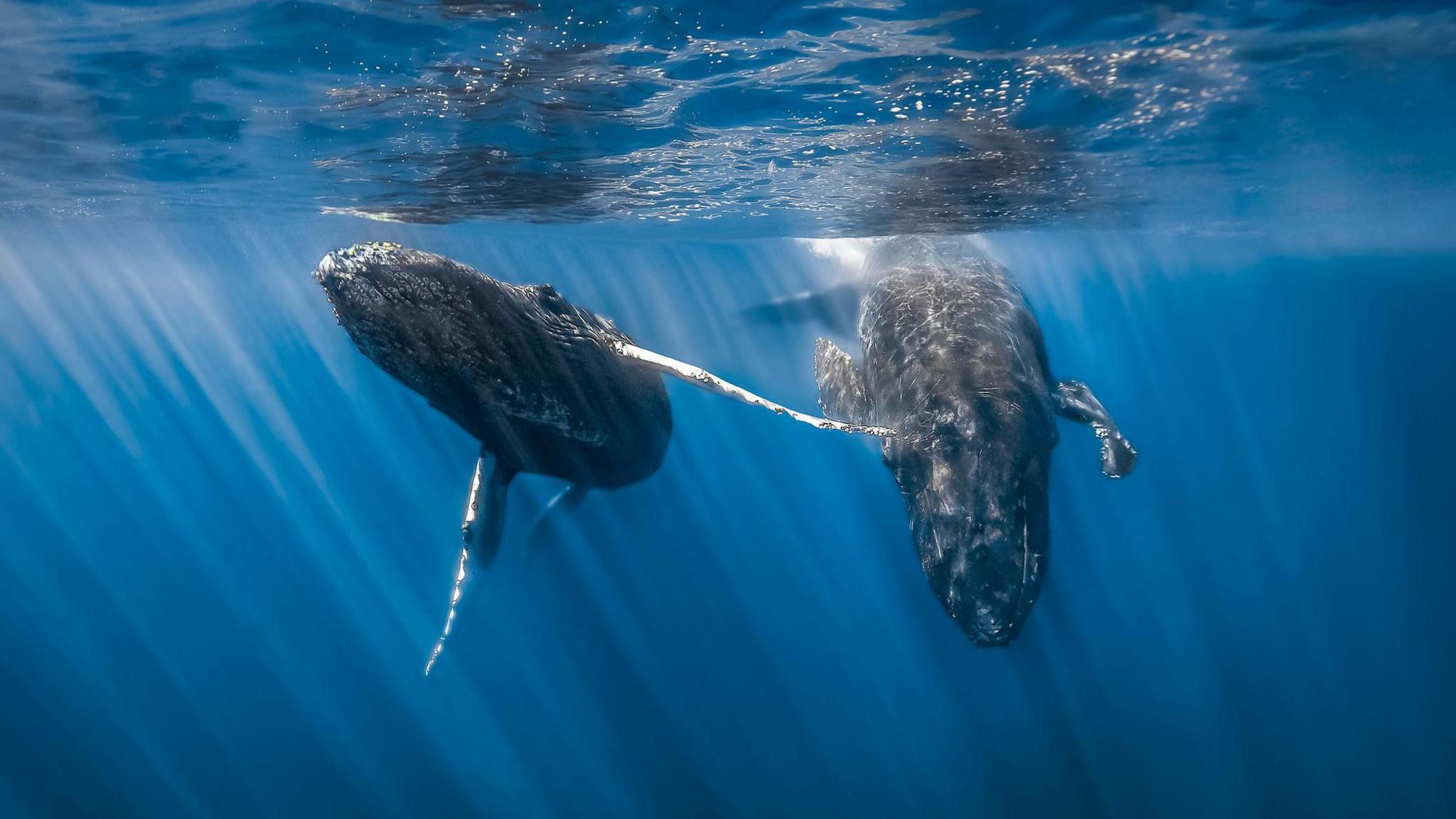The special tools Humpback whales use to catch their next meal

Humpback whales are able to use creative tools for hunting
- Published
Humpback whales are able to adapt unique tools to hunt, according to a new study.
Researchers have known for a while that the huge mammals can create 'bubble-nets' to catch prey.
These bubbles are blown by whales to alarm fish, causing them to move closer to the surface. This makes it easier for the whales to trap the fish and gulp them down.
The new study, carried out off the coast of Alaska, shows the whales don't just create the bubble-nets, but they also use this hunting tool in a number of different ways to catch the most food they can.
It means humpback whales are among the rare animals that are able to both create and manipulate their own tools for hunting.
More whale stories
Whale makes surprise appearance at the Olympics
- Published8 August 2024
How climate change is affecting whales and their habitat
- Published10 June 2024
Beluga whales change shape of their heads to communicate
- Published3 May 2024
“Many animals use tools to help them find food,” said professor Lars Bejder who is the co-lead author of the new study and Director at the Marine Mammal Research Program (MMRP) which carried out the research.
“But very few actually create or modify these tools themselves. We discovered that solitary humpback whales in southeast (SE) Alaska craft complex bubble nets to catch krill, which are tiny shrimp-like creatures.

Humpback whales cleverly use 'bubble-nets' to catch fish and other prey
The whales are able to blow bubbles in patterns that form nets, containing rings within them. They're also able to control things like the number of rings in the nets, the size and depth of the net, and the spacing between bubbles.
"This method lets them capture up to seven times more prey in a single feeding dive without using extra energy. This impressive behaviour places humpback whales among the rare group of animals that both make and use their own tools for hunting.” said professor Lars.

The new research is a big deal as the whales' ability to hunt is really important when it comes to their survival.
Humpback whales in southeast Alaska spend the winter months in Hawaii, and their energy levels for the whole year depend on their ability to capture enough food during summer and autumn.
“This little-studied foraging behaviour is wholly unique to humpback whales,” said William Gough, co-author for the study and MMRP researcher.
“It’s so incredible to see these animals in their natural habitat, performing behaviours that only a few people ever get to see. And it’s rewarding to be able to come back to the lab, dive into the data, and learn about what they’re doing underwater once they disappear from view.”
More of the latest
So Long, London: Taylor brings Wembley shows to an end with famous faces
- Published21 August 2024
Ice lollies in science lessons? What activities should be taught in school?
- Published21 August 2024
Super Blue Moon 2024: Incredible pictures from around the world
- Published21 August 2024
